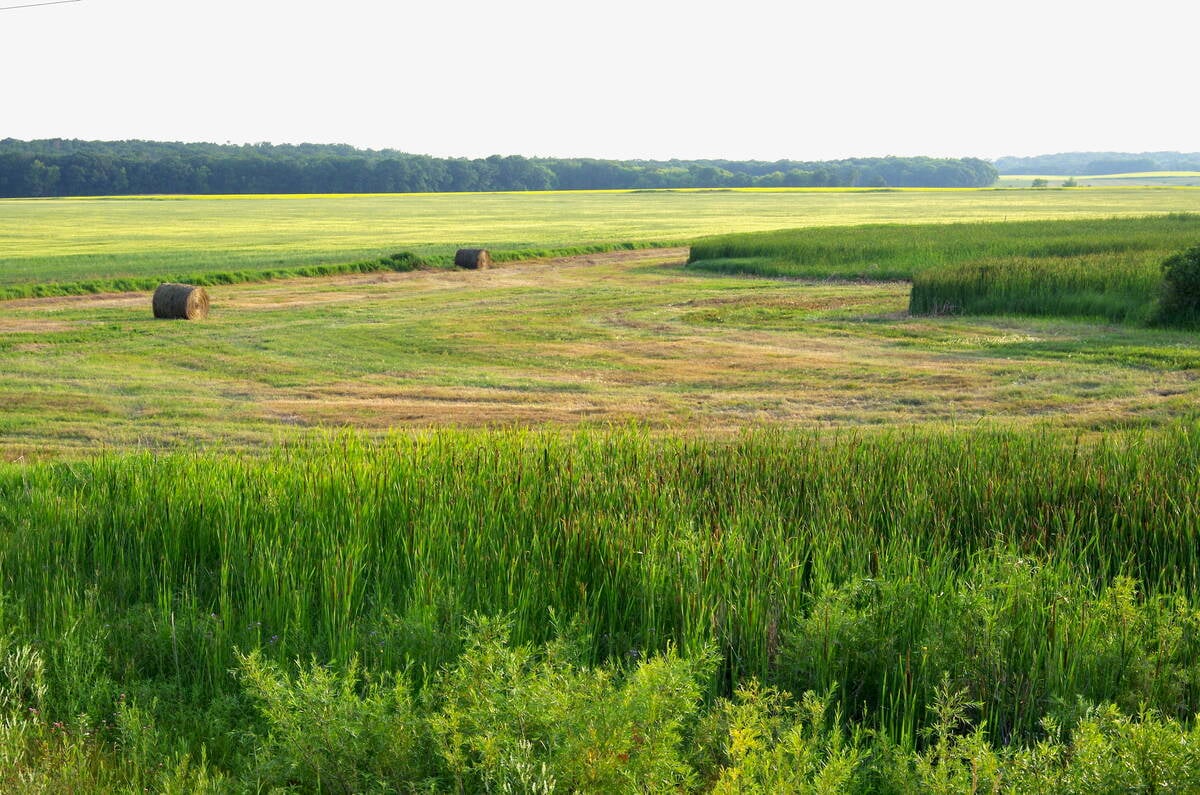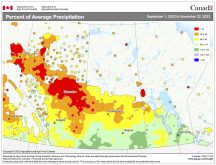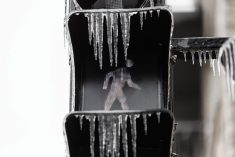The province is preparing for spring flooding, as heavy helpings of snow and a late melt buoy the likelihood of high water
Recent snowfall has increased the risk of flooding in Manitoba this spring, according to government officials.
Although the widespread and prolonged flooding of 2011 isn’t expected at this time, the province is preparing to close community ring dikes in the Red River Valley and expects Highway 75 to be closed for a period of weeks.
“We’re preparing for that eventuality and we’re lining up contractors to do the closures now,” said Doug McNeil, deputy minister for Manitoba Infrastructure and Transportation.
But at this time, it’s not expected that ring dike communities will have their access points cut off, he said.
Read Also

Manitoba farmers offered crop insurance carrot on marginal acres
Farmers planting poor field acres to perennial forage can get a break on forage crop insurance programs under new Forage Advantage pilot program.
“We’re expecting that our levels could be somewhere between 2009 and 2011 on the Red River,” he added, noting 2009 saw higher water levels than 2011 and went down as the second-largest Red River flood on record, after the 1826 deluge.
Last week, the U.S. National Weather Service updated its flood forecast, indicating the risk of major flooding in Fargo, North Dakota has increased to 98 per cent. Water there has a 50 per cent chance of reaching 20 feet above flood level, just shy of the 23 feet above flood level reached during the 2009 flood, which caused significant damage.
But one U.S. official notes even a 50 per cent increase in Fargo’s flood risk only translates into a two per cent increase in risk for significant flooding in Winnipeg, adding the Red River broadens as it heads north.
McNeil said high water is also expected on the Assiniboine River at Brandon, but not to the same extent as two years ago.
“Although we don’t expect 1st and 18th streets to be inundated this year… we already have sandbags and super-sandbags in stock and we will be locating them out there as a precaution,” he said.
In 2011, water crested nearly 12 feet above road level at that location.
Although much of the Prairies has received above- average snowfall this winter, Canada’s senior climatologist David Phillips notes that what really matters is how much of that snow is still on the ground when the spring melt arrives.
Winnipeg has received 156 centimetres of snow this winter, but only 60 centimetres remain, said Phillips, which is a number that draws a strong comparison with 1997’s flood of the century.
“It’s interesting that the amount of snow on the ground that April, after that snow event, is the same amount of snow that’s right there in Winnipeg today,” said Phillips.
But dry conditions at freeze-up should help mitigate spring run-off and a slow melt would further reduce the impact of the snowpack, he added.
“What you want in an ideal, perfect world would be to have maple syrup-kind of weather, where you’ve got the plus-5 C days and minus-5 C nights,” said the climatologist.
Temperatures are expected to continue to be below normal across Manitoba in the coming week, and so far, a quick or drastic rise in temperature isn’t in the forecast. However, Manitoba flood forecasters note the longer the cold weather continues, the greater the possibility of a rapid melt.
“It’s shaping up to look like a difficult spring,” said Doug Chorney, president of Keystone Agricultural Producers.
Many farmers send soybeans, oats, flax and wheat to the United States via Highway 75. A disruption could mean delays and detours, Chorney said, adding prolonged flooding could also delay seeding.
“The closure of Highway 75 is always frustrating,” Chorney said, adding domestically it makes delivery difficult for the canola-crushing plant at Altona.
He expects farmers in the west of the province will also be affected by river flooding this spring, noting farmers around Lake Manitoba and the Shoal Lakes are still being affected by high water from 2011.
“But there is still a long ways between now and spring, and things can change quickly,” said Chorney.
Flood experts agree.
“We’re not getting too excited at this time, staff are accessing the impacts of recent snowfall… and looking at conditions south of the border as well as in Saskatchewan,” said McNeil. “We’re not expecting the magnitude of the 2011 flood this year, but we are preparing for flooding on both the Assiniboine and Red rivers, as well as their tributaries.”
An while some note the similarities between this spring and the late melt of 1997, McNeil points out many upgrades have been made to infrastructure such as community dikes, highways and the floodway in the last 16 years.
What remains to be seen now is how the spring thaw unfolds, said Phillips.
“And that is a bit of a crap shoot,” he said.














